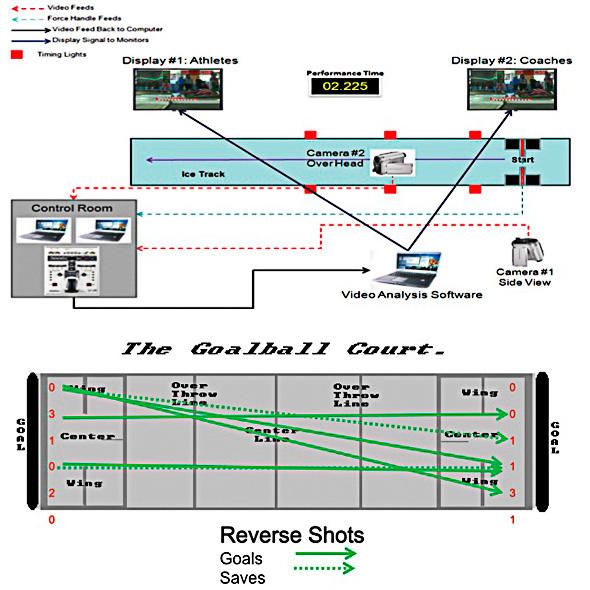Coaching and Innovation
Coaching and Innovation: Factors in Adoption of New Technology
Larry Katz1, Jenny Vincent1, Dwayne Sheehan2, Pro Stergiou1
1Faculty of Kinesiology, Centre for Video and Performance Analysis, Sport Technology Research Lab, University of Calgary
2Department of Physical Education and Recreation Studies, Mount Royal University
Introduction
Technology innovations have led to changes in the way sports are performed and even in the rules that govern sports. The impact has been wide spread and includes everything from practice planning, administration (e.g., scoring, drug screening), uniforms, equipment, periodization strategies, training principles, movement analysis, nutrition and rehabilitation.
A Computer-Assisted Coaching Model divides technology used in sport into three broad categories: managing, monitoring, and mentoring. These categories encompass a multitude of sport science components that include data management; notational, pattern, performance and game analysis; biomechanics, physiology; and collaborative and distributed communications technologies (e.g., multimedia, GPS).
The Model for Implementation of Innovations in Coaching addresses the issue of the adoption of new innovations particularly with respect to the factors that influence acceptance and effective implementation. Coaches and administrators are constantly bombarded by vendors and proponents of new innovations. Since these tools are usually expensive, potentially time-intensive, and risk being left in the closet, a theoretical guide to navigating the technology maze is provided.
Issues relevant to the level of engagement and technology acceptance models will be addressed.
Computer Assisted Coaching Model

Model for Implementations for Innovations for Coaching

Examples of Innovation
Integration of Video and Force
- Analysis of the start technique in the Olympic sport of Luge
- Two video cameras, bi-lateral force sensors on handles, computer software, digital mixers, and computer with video collection software
- Real-time feedback to athletes and coaches with force and video displayed simultaneously on large LCD monitors
- Innovation for creation, integration, implementation and presentation of information to athletes and staff
Game Play Strategy
- Game play breakdown and creation of strategy in the Paralympic sport of Goalball
- Multi-game analysis and creation of defensive and offensive strategies against other competitors in Beijing Paralympics
- Innovation for creation of methods to share strategic information with blind athletes using computer software and summary images

Adoption of Technology
Depends on:
- Effectiveness of the change
- Communication
- Resources available
- Impact of not adopting the change (e.g. Clap skate in speed skating)
Rogers (2003) Diffusion of Innovation suggests that the rate of adoption of innovation is dependent upon:
- Relative advantage –the degree by which an innovation is perceived as a better idea than the idea it supersedes.
- Compatibility - the degree by which an innovation is perceived to be consistent and compatible with other innovations.
- Complexity - the degree by which an innovation is perceived to be too difficult to understand or to use.
- Trialability - the degree by which an innovation may be experimented with on a limited basis.
- Observability - the degree by which results of an innovation are visible to others or seen by others.
Willingness of Coach to Participate in Innovation
Depends on the:
- Background of coach
- Technology experience
- Years of coaching experience
- Previous experience with change
- Belief in the potential effectiveness of the change
- Fear of change / level of risk taking
- Degree of Involvement in the decision-making
- Authority to make decision
- Support for innovation
- Financial
- Technical
- Social
- Emotional
References
Rogers, E. M. (2003). Diffusion of Innovations (5th. ed.). New York: The Free Press.
